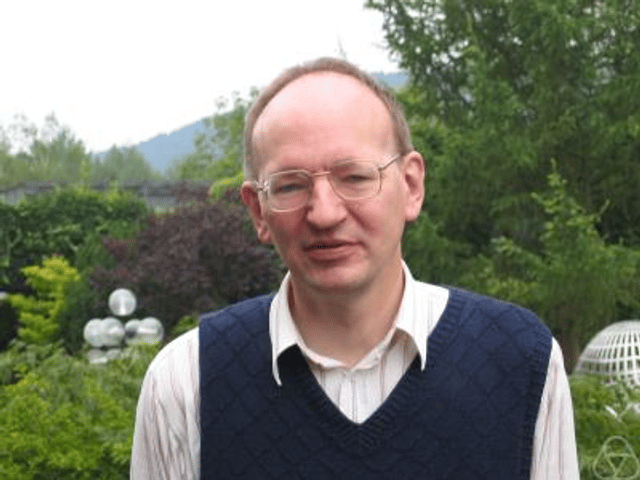Faltings's theorem

Faltings's theorem

| Field | Algebraic geometry and number theory |
|---|---|
| Conjectured by | Louis Mordell |
| Conjectured in | 1922 |
| First proof by | Gerd Faltings |
| First proof in | 1983 |
| Generalizations | Bombieri–Lang conjecture Mordell–Lang conjecture |
In number theory, the Mordell conjecture is the conjecture made by Mordell (1922) that a curve of genus greater than 1 over the field Q of rational numbers has only finitely many rational points. In 1983 it was proved by Gerd Faltings (1983, 1984), and is now known as Faltings's theorem. The conjecture was later generalized by replacing Q by any number field.
| Field | Algebraic geometry and number theory |
|---|---|
| Conjectured by | Louis Mordell |
| Conjectured in | 1922 |
| First proof by | Gerd Faltings |
| First proof in | 1983 |
| Generalizations | Bombieri–Lang conjecture Mordell–Lang conjecture |
Background
Let C be a non-singular algebraic curve of genus g over Q. Then the set of rational points on C may be determined as follows:
Case g = 0: no points or infinitely many; C is handled as a conic section.
Case g = 1: no points, or C is an elliptic curve and its rational points form a finitely generated abelian group (Mordell's Theorem, later generalized to the Mordell–Weil theorem). Moreover, Mazur's torsion theorem restricts the structure of the torsion subgroup.
Case g > 1: according to the Mordell conjecture, now Faltings's theorem, C has only a finite number of rational points.
Proofs
Shafarevich (1963) posed a finiteness conjecture that asserted that there are only finitely many isomorphism classes of abelian varieties of fixed dimension and fixed polarization degree over a fixed number field with good reduction outside a given finite set of places. Parshin (1968) showed that the Mordell conjecture would hold if the Shafarevich finiteness conjecture was true using Parshin's trick, which gives an embedding of a curve into the Siegel modular variety.
Faltings (1983) proved the Shafarevich finiteness conjecture using a known reduction to a case of the Tate conjecture, and a number of tools from algebraic geometry, including the theory of Néron models. The main idea of Faltings' proof is the comparison of Faltings heights and naive heights via Siegel modular varieties.[1]
Later proofs
A proof based on diophantine approximation was given by Vojta (1991). A more elementary variant of Vojta's proof was given by Bombieri (1990).
Consequences
Faltings's 1983 paper had as consequences a number of statements which had previously been conjectured:
The Mordell conjecture that a curve of genus greater than 1 over a number field has only finitely many rational points;
The Isogeny theorem that abelian varieties with isomorphic Tate modules (as Qℓ-modules with Galois action) are isogenous.
A sample application of Faltings's theorem is to a weak form of Fermat's Last Theorem: for any fixed n > 4 there are at most finitely many primitive integer solutions (pairwise coprime solutions) to a**n + b**n = c**n, since for such n the curve x**n + y**n = 1 has genus greater than 1.
Generalizations
Because of the Mordell–Weil theorem, Faltings's theorem can be reformulated as a statement about the intersection of a curve C with a finitely generated subgroup Γ of an abelian variety A. Generalizing by replacing C by an arbitrary subvariety of A and Γ by an arbitrary finite-rank subgroup of A leads to the Mordell–Lang conjecture, which was proved by Faltings (1991, 1994).
Another higher-dimensional generalization of Faltings's theorem is the Bombieri–Lang conjecture that if X is a pseudo-canonical variety (i.e., a variety of general type) over a number field k, then X(k) is not Zariski dense in X. Even more general conjectures have been put forth by Paul Vojta.
The Mordell conjecture for function fields was proved by Manin (1963) and by Grauert (1965). In 1990, Coleman (1990) found and fixed a gap in Manin's proof.